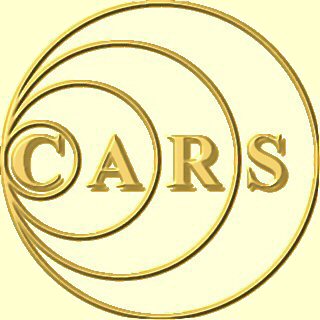 |
G0MWT, GX0MWT, GB5HF, GB100MWT & GB95-2MT
CARS Meetings: April - June 2021 |
 |
G0MWT, GX0MWT, GB5HF, GB100MWT & GB95-2MT
CARS Meetings: April - June 2021 |
©Copyright CARS
April Meeting
Tue 6-Apr-2021, 7.30-9pm
Online by Zoom"50 Years in the Hobby"
By Don Field G3XTT
For April, we welcomed Don Field G3XTT, Editor of Practical Wireless, who gave us a beautifully illustrated look back over his 50+ years in the hobby - a period of amazing experience and great changes.
Don is a keen HF DXer and contester, and is in the top DXCC rankings. He has also been involved with managing the IOTA Contest and served on various RSGB Committees. His travels have included much of Africa and other DXpeditions
His time in the hobby started as a SWL in 1966 but he began to hear amateurs on 160m and 80m.
This prompted him to get his licence in 1968 whilst still in the 6th Form. Indeed he was so keen that he took his Morse test before getting the C&G results.
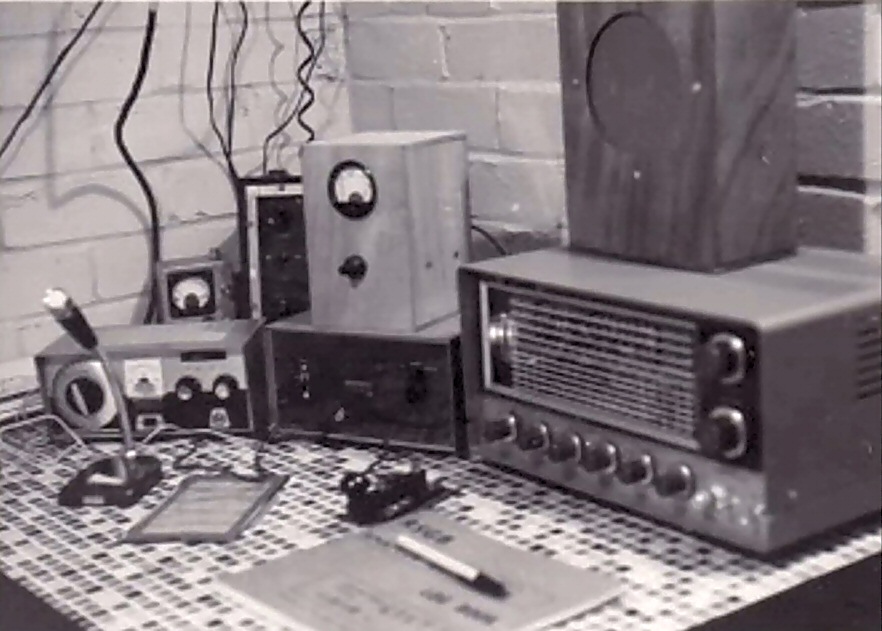
Early Days: Lafayette Receiver and a Yaesu FT101At university in 1970 contesting such as CQWW caught the interest, and he went on a DXpedition to activate Scottish counties. After university he first job went towards 4m and 2m kit
At home it was pretty basic but in the 1980s he got married, acquired a Jaybeam tribander and a windup mast for some real antenna gain.
As the 1990s arrived be moved from Cambridge to Reading and the first 286PC brought early computer logging and RTTY.
1990s - Computers arrive - TurboLog and RTTY on a 286 PCOver time he started to venture around various African locations as part of the Voodoo Contest Group www.voodoocontestgroup.com. Local and hotels were often very helpful in assisting with erecting antennas for these 'weird' hams.
Don has also taken part in many DXpedition operations further afield including St Kilda, Market Reef, Iceland, Walvis Bay (near Namibia), Spratley Isles etc. Don once gave a talk about his time with Rodrigues Island 3B9C (near Mauritius) to CARS back in May 2005.
2012: Titanic Special Event GR100MGY (from Goldalming birthplace of Jack Philips)
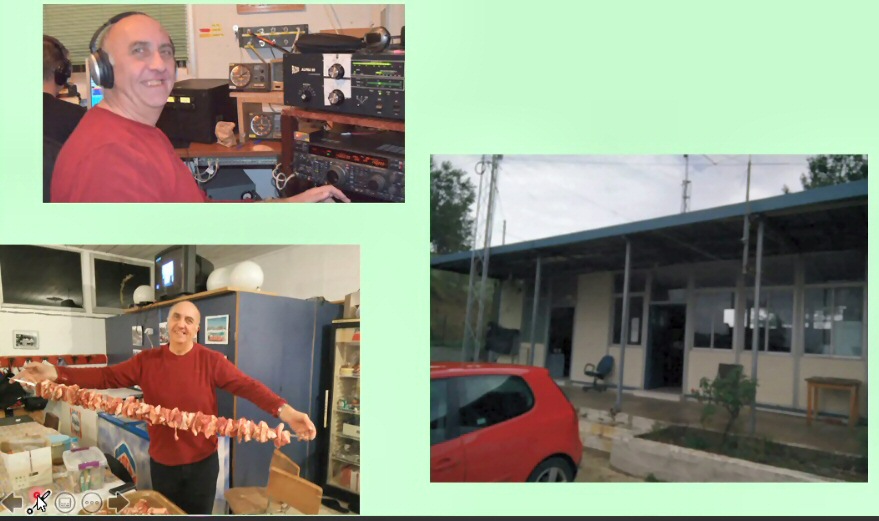
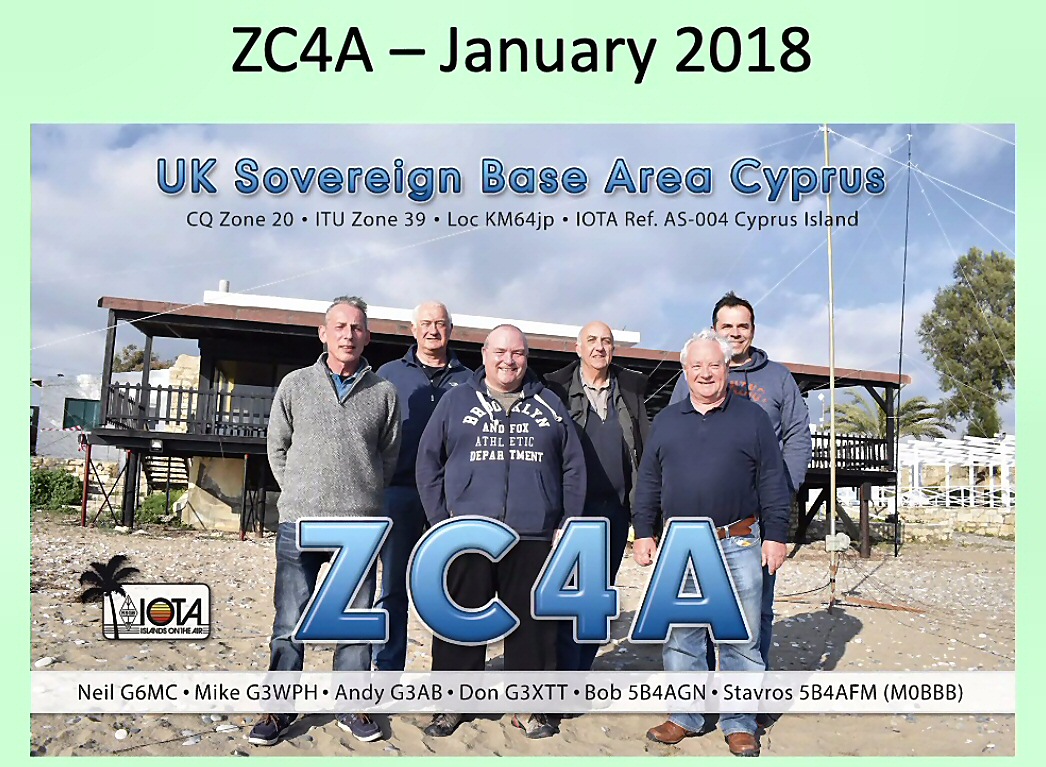
2015: Greece SZ1A for CQWW - 2018: Cyprus Sovereign Base ZC4ANowadays Don uses an Icom 7610 (the big brother of the 7300), but he started with a Layfayette 340 receiver and eventually a FT101.
Our thanks to Don for a really great tour of amateur radio
May Meeting
Tue 4-May-2021, 7.30-9pm
Online by Zoom"Further Adventures at VHF/UHF"
By Tim Kirby GW4VXE
Following our HF talk in April by Don Field G3XTT, for May we moved up in frequency… Tim Kirby GW4VXE from Practical Wireless gave his own perspective on on ‘Further adventures with your VHF/UHF station’. His aim was to speak from his own experience on things to try, station setup, antennas etc.
Tim is an author for both Practical Wireless (~10 years as VHF columnist) and some work for RadCom such as on equipment reviews.
Tim recently moved to West Wales for both quality of life and a nice radio qth.
He started quite topically with the news that the sporadic-E season had been one of the RF highlights last year during lock down, though it had been a slower start this year.
Apart from amateur reports, Tim still found that European CB signals on 27MHz were still a good indicator of an opening and the MUF changing.
Nowadays digital modes play a key role for activity, and on 6m the FT8 usage has been centred on 50.313 (and longer DX on 50.323). The mode is a real help for smaller stations and lower powers. The next ‘Joe Taylor’ development is the new Q65 mode that has been added to the WSJT-X suite which has been optimised for VHF as it can cope greater Doppler spreads that FT8 which was intended for HF. The square map opposite shows his 144 MHz FT8 squares – showing that VHF definitely can reach beyond line of sight. Many of Tim’s QSOs have been made using a simple vertical with FT8 (ie broader use than just traditional FM) – no need for a large beam.
Squares worked with FT8 on VHFAnother technique for long range VHF/UHF contacts is aircraft scatter. Tim used to live in Windsor near Heathrow and was able to have many aircraft scatter QSOs on SSB. As per the picture below the Doppler shifted signal reflected via the aircraft is seen going across the waterfall plot. Exploiting this can be assisted by software and websites that track aircraft positions and ones tailored for amateur radio predictions such as ‘Airscout’
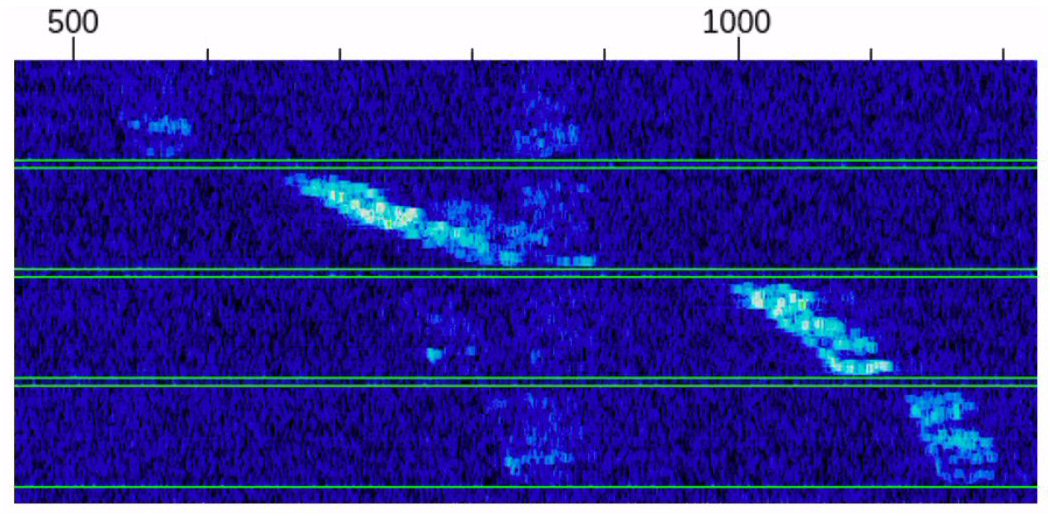
Aircraft scatter reception and a screenshot from the Airscout.eu softwareOverall Tim has managed 2000 QSOs with FT8 on his classic Yaesu FT847 - with the best DX being SV2JL in Greece. Further up the bands, 70cm and 23cm are harder (not helped by the Doppler/spreading), but he still managed to get 70cm FT8 to the Canary Islands.
In summary VHF/UHF isn¡¦t just good for local chats, but it can be good for DX too, with the newer digital modes offering a real benefit, especially for smaller stations - Thanks Tim!
Useful links:
WSJT-X: physics.princeton.edu/pulsar/k1jt/wsjtx.html Airscout: airscout.eu Longer talk by Tim: RSGB Tonight@8 VHF talk
June Meeting
Tue 8-Jun-2021, 7.30-9pm
Online by Zoom"A Guide to EMF"
John Rogers M0JAV
A major topic over the past year or so has been Ofcom's introduction of more rigorous requirements for public exposure from Electro-Magnetic Fields into amateur and other radio licences. For June we were therefore privileged to have John Rogers M0JAV (Just Another Volunteer!) who is the RSGB lead on the topic. John is currently both a Board member and EMC Committee Chair, so has been kept busy with this extra aspect. CARS had 34 attendees via Zoom for this important subject.
Following a series of consultations that had started in 2020, the new licence conditions became effective on May 18th and both Ofcom and RSGB have been rolling out guidance and calculation tools.
The changes to all transmitting licences require licensees to comply with ICNIRP general public limits on EMF exposure. A whole new section, Schedule-3, has been added by Ofcom to all amateur licences. The changes even include previously licence-exempt users who transmit at powers of more than 10W EIRP. With many countries updating their rules, there has been a team effort between RSGB and ARRL experts.
Ofcom provide both general EMF Guidance and more specific guides for amateurs, ship, aeronautical users and shared sites, along with a basic spreadsheet EMF calculator. Their guidance includes a document 'What you need to know as an Amateur Radio user'.
The Ofcom information is online at www.ofcom.org.uk/emf. Their latest guide is greatly simplified compared to early drafts and now comprises just four key steps:-
There is a great emphasis on calculation or modelled configurations, as this can be easier for most amateurs than accurate calibrated measurements. RSGB have developed a more tailored calculation spreadsheet that is compatible with Ofcom's and includes tables of common feeders and antennas.
- Step 1 - Do I need to comply?
- Step 2 - Carrying out a compliance check
- Step 3 - Managing compliance
- Step 4 - Keeping an appropriate compliance record
Carrying out a compliance check to find exclusion zones refers to just two methods:-
Fortunately Ofcom have given grace periods by which time your assessments need to be undertaken and recorded so that they are available for inspection. These range from 18th November 2021 for all frequencies above 110MHz; to 18th May 2022 for 10MHz-110MHz; and finally 18th November 2022 for below 10MHz.
- 1) using the Ofcom or RSGB calculator, or
- 2) using a pre-assessed configuration to give less conservative exclusion zones
A screenshot of the RSGB EMF Calculator spreadsheet
ICNIRP have revised the exposure limits, but time averaging (and thus duty cycle) are key factors
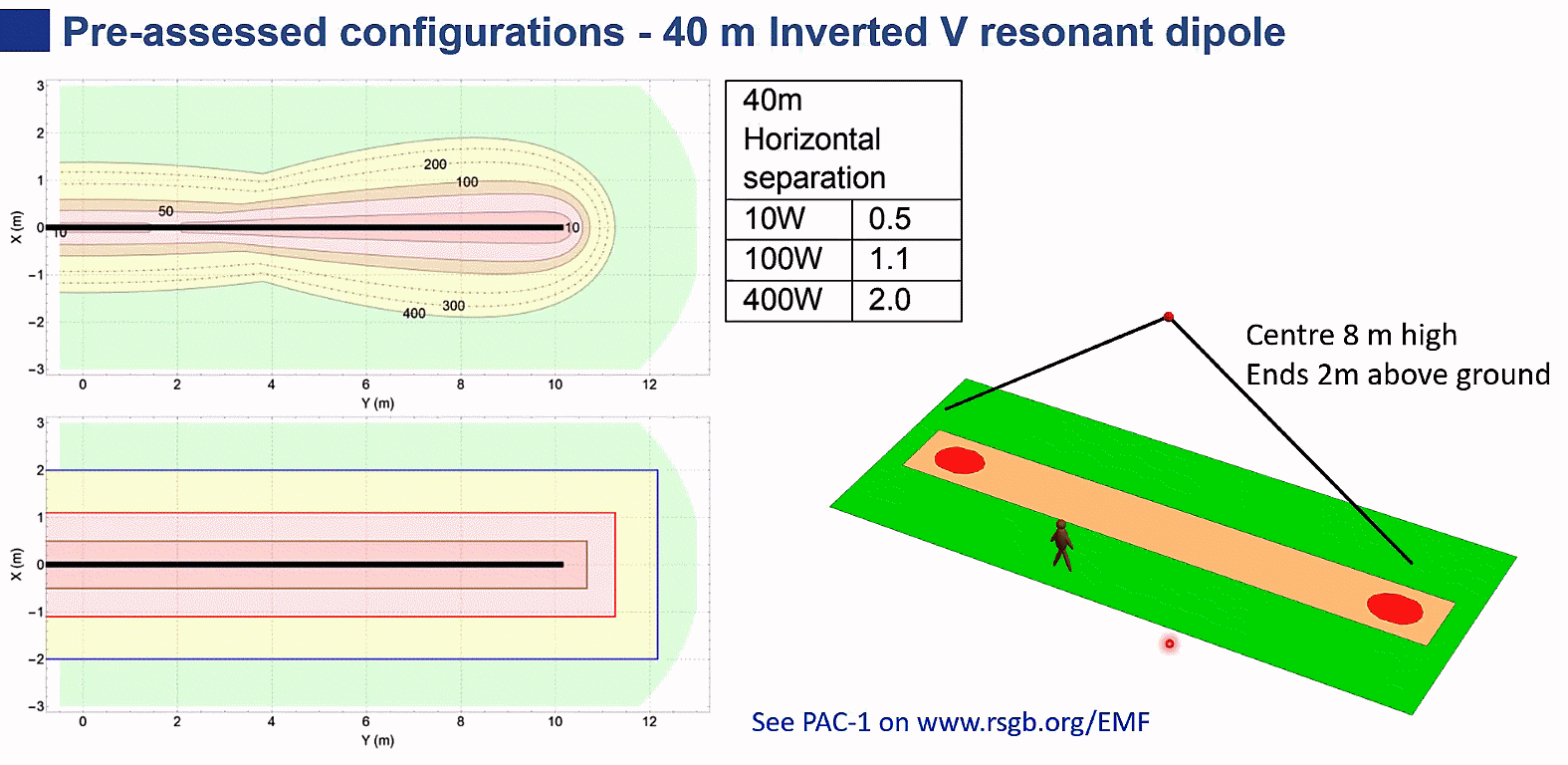
Pre-assessed configurations are useful for HF.
This Inverted-V Dipole demonstrates how extra height (or lack of it) can make a difference to passers-bySo make sure you read the new Schedule-3 on your new licence conditions. Both Ofcom and RSGB have a lot more online. The RSGB Exam syllabus will also have new content and questions on EMF shortly.
Our thanks to John for a great presentation which prompted lots of questions from the audience at the end!
Useful links:
Ofcom: www.ofcom.org.uk/emf RSGB: www.rsgb.org/emf
To RETURN to the Meetings Page - Click Here
To RETURN to the CARS Home Web Page - Click Here